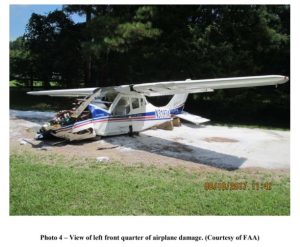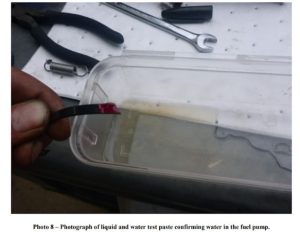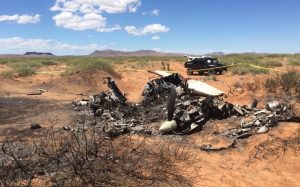Introduction:
Aviation fuel contamination and misfuelling pose significant risks to aircraft operations and safety. The consequences of these hazards can range from engine malfunctions to catastrophic accidents. Pilots must understand the potential dangers associated with fuel contamination, be diligent in catching misfuelling incidents, and prioritize the practice of fuel sampling before every flight. This article explores the hazards, highlights real-world examples, and emphasizes the vital role of pilots in ensuring safe and incident-free flights.
1. Aviation Fuel Contamination:
Aviation fuel contamination can result from various factors, including improper storage, handling, or transportation. Contaminants such as water, sediment, microbial growth, and particulate matter can compromise the fuel’s quality and adversely affect engine performance. If not addressed, fuel contamination can lead to engine stalling, reduced power output, or complete engine failure during critical phases of flight.
Real-World Example:
NTSB’s Report Points to Bad Fuel as Cause of Plane Crash That Killed New Kent Flight Instructor:


Investigations revealed that water contamination in the fuel supply caused engine failure, resulting in the tragic loss of life. This incident underscores the importance of fuel quality control and emphasizes the need for proactive measures to prevent fuel contamination.
2. Misfueling Incidents:
Misfueling occurs when an aircraft is refueled with the wrong type of fuel. This happens due to human error, inadequate fueling procedures, or improper labeling. Different aircraft types require specific fuel formulations, and using an incorrect fuel type can lead to severe engine damage or failure.
Real-World Example: C421 27 August 2014 New Mexico
 This Fatal crash occurred when the plane was inadvertently refueled with the wrong fuel type, incompatible with its engines. The aircraft suffered engine failure shortly after takeoff, resulting in a catastrophic accident. This tragic event serves as a reminder of the critical need for meticulous attention to detail and adherence to fueling protocols to prevent misfuelling incidents.
This Fatal crash occurred when the plane was inadvertently refueled with the wrong fuel type, incompatible with its engines. The aircraft suffered engine failure shortly after takeoff, resulting in a catastrophic accident. This tragic event serves as a reminder of the critical need for meticulous attention to detail and adherence to fueling protocols to prevent misfuelling incidents.
3. The Importance of Fuel Sampling:
To mitigate the risks associated with fuel contamination and misfuelling, pilots play a pivotal role in ensuring safe operations. Before every flight, pilots must sample fuel immediately after refueling to verify its quality and correct type. This practice allows pilots to detect potential issues, such as water contamination or incorrect fuel type before they become critical in-flight problems.
Pilots can identify the presence of water or the wrong fuel by visually inspecting their noses and using a sample jar. Additionally, pilots should verify the correct fuel type by checking fueling documentation and labels. Report to the appropriate authorities any discrepancies or anomalies for investigation and rectification.
Conclusion:

 This Fatal crash occurred when the plane was inadvertently refueled with the wrong fuel type, incompatible with its engines. The aircraft suffered engine failure shortly after takeoff, resulting in a catastrophic accident. This tragic event serves as a reminder of the critical need for meticulous attention to detail and adherence to fueling protocols to prevent misfuelling incidents.
This Fatal crash occurred when the plane was inadvertently refueled with the wrong fuel type, incompatible with its engines. The aircraft suffered engine failure shortly after takeoff, resulting in a catastrophic accident. This tragic event serves as a reminder of the critical need for meticulous attention to detail and adherence to fueling protocols to prevent misfuelling incidents.